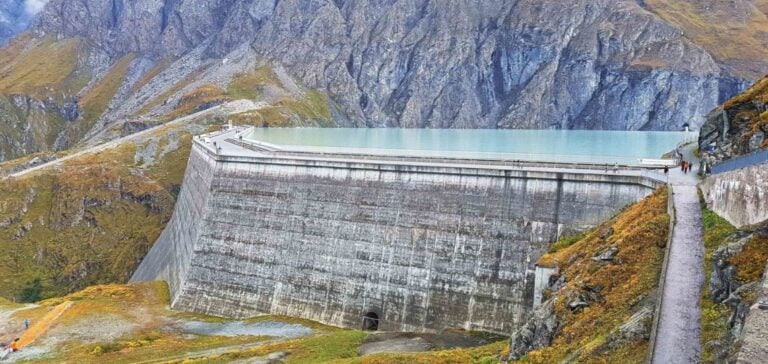At the Swiss Federal Institute of Technology Zurich (ETH Zurich), under the direction of Robert Boes, specific solutions are being developed to maximize the efficiency of Swiss hydroelectric power plants. These efforts ensure that hydropower remains the mainstay of Switzerland’s energy supply, and of the country’s green transition. “Despite the reliability of Swiss hydropower, constant optimization is crucial,” explains Boes. This includes addressing natural reservoir shrinkage and turbine wear due to sediment.
Challenges such as reservoir sedimentation and turbine wear are at the heart of the research. Water management and turbine maintenance strategies have been developed, identifying the most suitable locations for the efficient use of hydropower. These initiatives ensure the sustainability of this resource, especially during winter.
Water management and sediment protection
Optimized dam management, particularly at Zurich’s Platzspitz park, could boost electricity production from river power plants. Boes offers an intelligent management system, using weather forecasts to proactively regulate water levels. At the same time, research is aimed at effectively protecting turbines against sediment abrasion, by improving the design of sand traps.
Combating sedimentation in reservoirs
Dedicated debris passages in reservoirs are proving highly effective in reducing sedimentation, a growing problem that threatens storage capacity. The use of high-strength granite for the lining of bypass tunnels represents a sustainable solution to erosive challenges. These structural adaptations are essential to maintain storage capacity and energy production.
Optimized turbine maintenance
Faced with the accumulation of sediment, gently directing it downstream via the water intake and turbines is emerging as a viable strategy, despite the increased wear and tear on the turbines. Boes’ research has resulted in a predictive model for turbine maintenance, maximizing electricity production.
In addition to these solutions for existing power plants, ETH Zurich is exploring the potential for expanding hydropower, particularly in areas of glacial retreat. These studies influenced the national energy dialogue, resulting in a list of accepted expansion projects for future energy legislation.






















